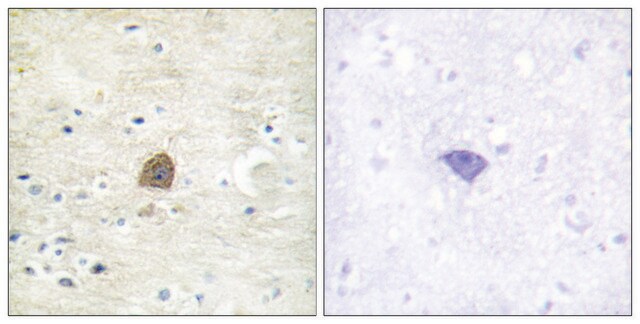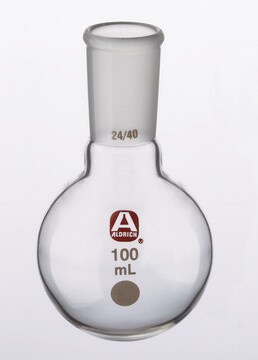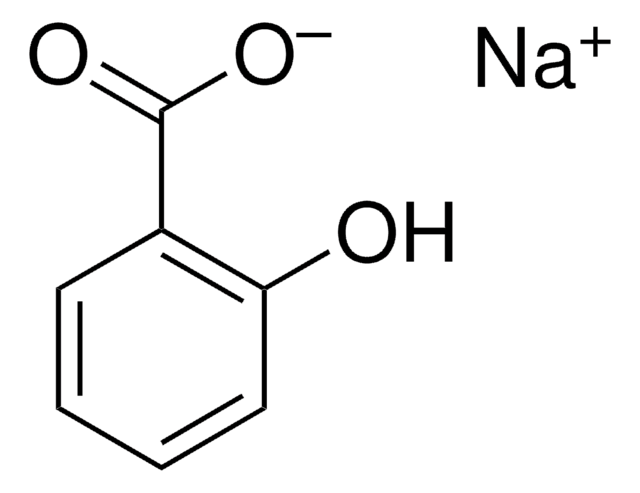ABS2107M
Anti-phospho-CaMKII beta (Ser331)
from rabbit, purified by affinity chromatography
Sinonimo/i:
Calcium/calmodulin-dependent protein kinase type II subunit beta, EC: 2.7.11.17, CaM kinase II subunit beta, CaMK-II beta
About This Item
Prodotti consigliati
Origine biologica
rabbit
Livello qualitativo
Forma dell’anticorpo
affinity isolated antibody
Tipo di anticorpo
primary antibodies
Clone
polyclonal
Purificato mediante
affinity chromatography
Reattività contro le specie
rat
Reattività contro le specie (prevista in base all’omologia)
human (based on 100% sequence homology)
Confezionamento
antibody small pack of 25 μL
tecniche
immunocytochemistry: suitable
western blot: suitable
Isotipo
IgG
N° accesso NCBI
N° accesso UniProt
modifica post-traduzionali bersaglio
phosphorylation (pSer331)
Informazioni sul gene
rat ... Camk2B(24245)
Categorie correlate
Descrizione generale
Specificità
Immunogeno
Applicazioni
Immunocytochemistry Analysis: A representative lot detected phospho-CaMKII beta (Ser331) in dissociated hippocampal neurons (Kim, K., et. al. (2015). Neuron. 87(4):813-26).
Qualità
Western Blotting Analysis: A 1:500 dilution of this antibody detected phospho-CaMKII beta (Ser331) in HEK293T cells transfected with CaMKII WT, but not the mutant S331A.
Descrizione del bersaglio
Altre note
Non trovi il prodotto giusto?
Prova il nostro Motore di ricerca dei prodotti.
Codice della classe di stoccaggio
12 - Non Combustible Liquids
Classe di pericolosità dell'acqua (WGK)
WGK 1
Punto d’infiammabilità (°F)
Not applicable
Punto d’infiammabilità (°C)
Not applicable
Certificati d'analisi (COA)
Cerca il Certificati d'analisi (COA) digitando il numero di lotto/batch corrispondente. I numeri di lotto o di batch sono stampati sull'etichetta dei prodotti dopo la parola ‘Lotto’ o ‘Batch’.
Possiedi già questo prodotto?
I documenti relativi ai prodotti acquistati recentemente sono disponibili nell’Archivio dei documenti.
Il team dei nostri ricercatori vanta grande esperienza in tutte le aree della ricerca quali Life Science, scienza dei materiali, sintesi chimica, cromatografia, discipline analitiche, ecc..
Contatta l'Assistenza Tecnica.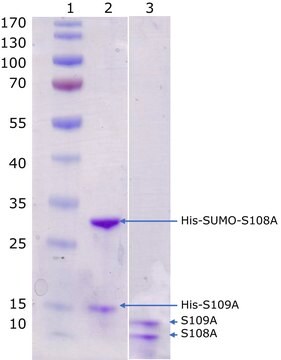
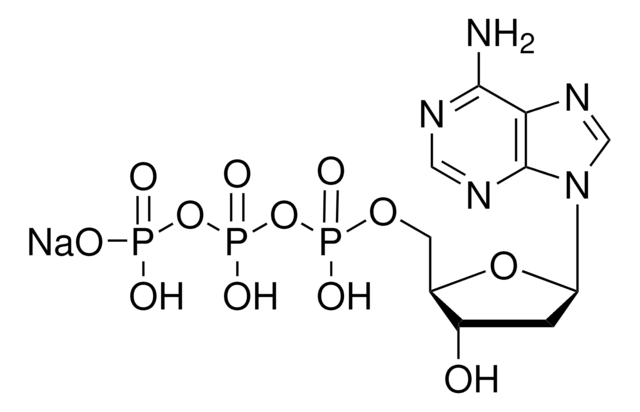
![3-[(Trimethylsilyl)ethynyl]pyridine 97%](/deepweb/assets/sigmaaldrich/product/structures/343/531/3049f5ac-7c3c-45ca-b43c-809abc2f3c9d/640/3049f5ac-7c3c-45ca-b43c-809abc2f3c9d.png)


